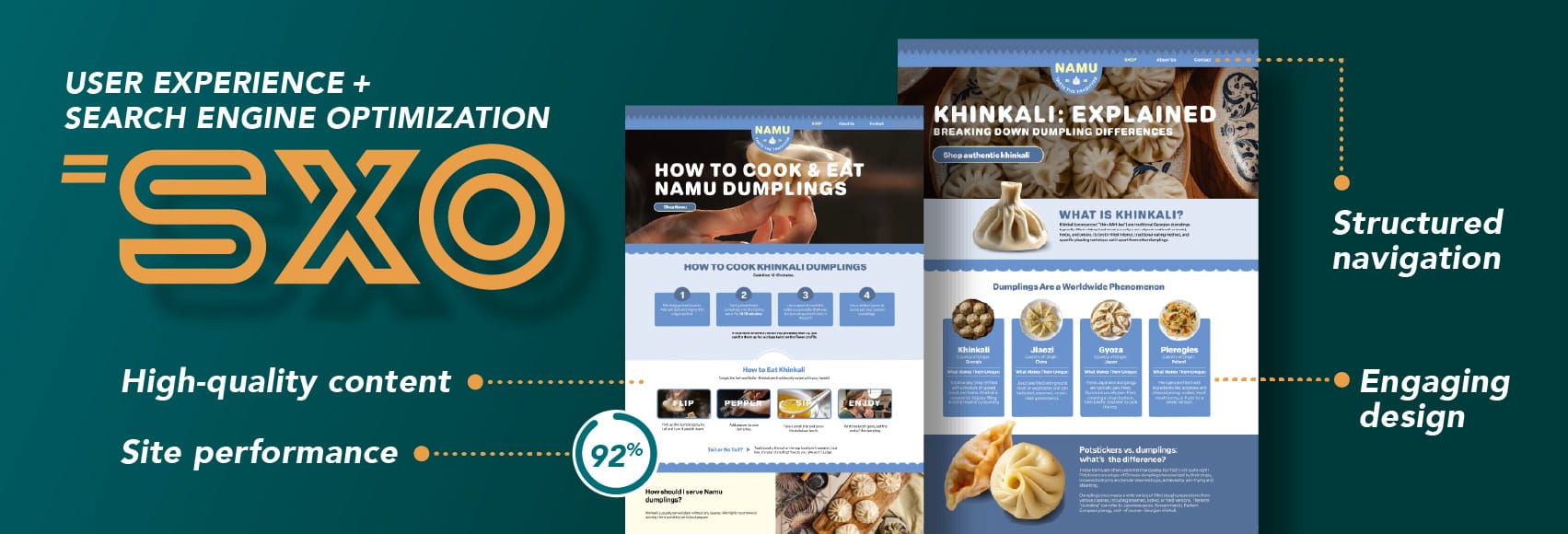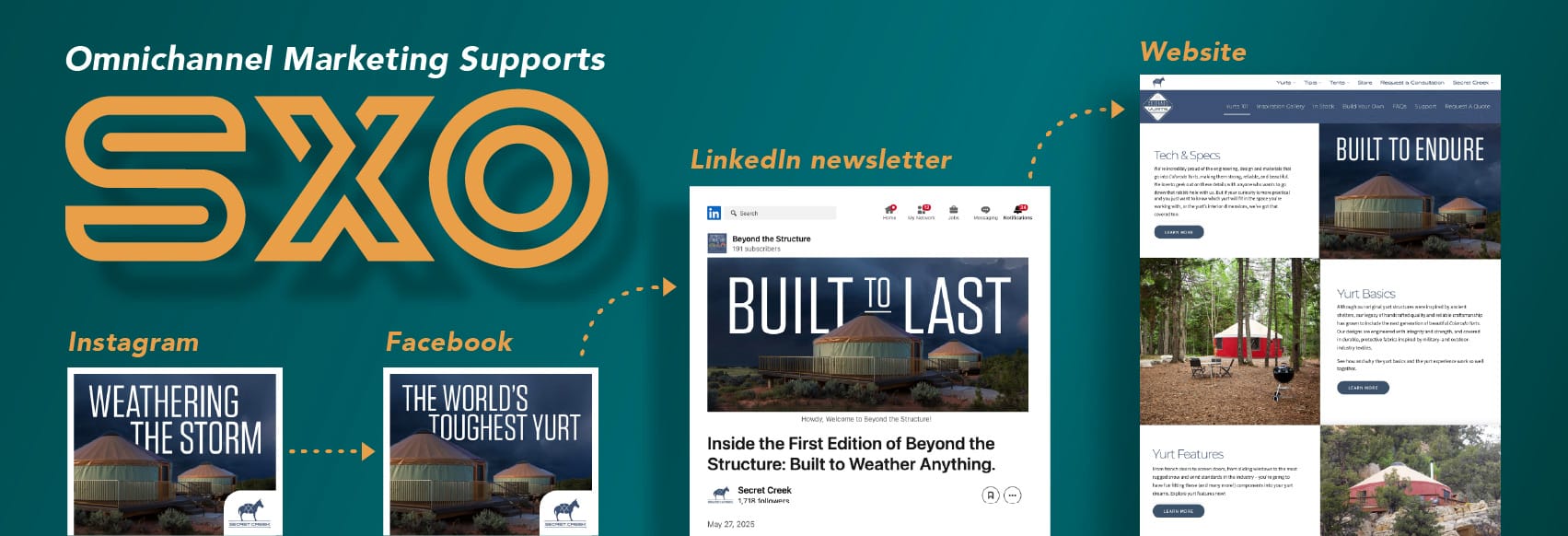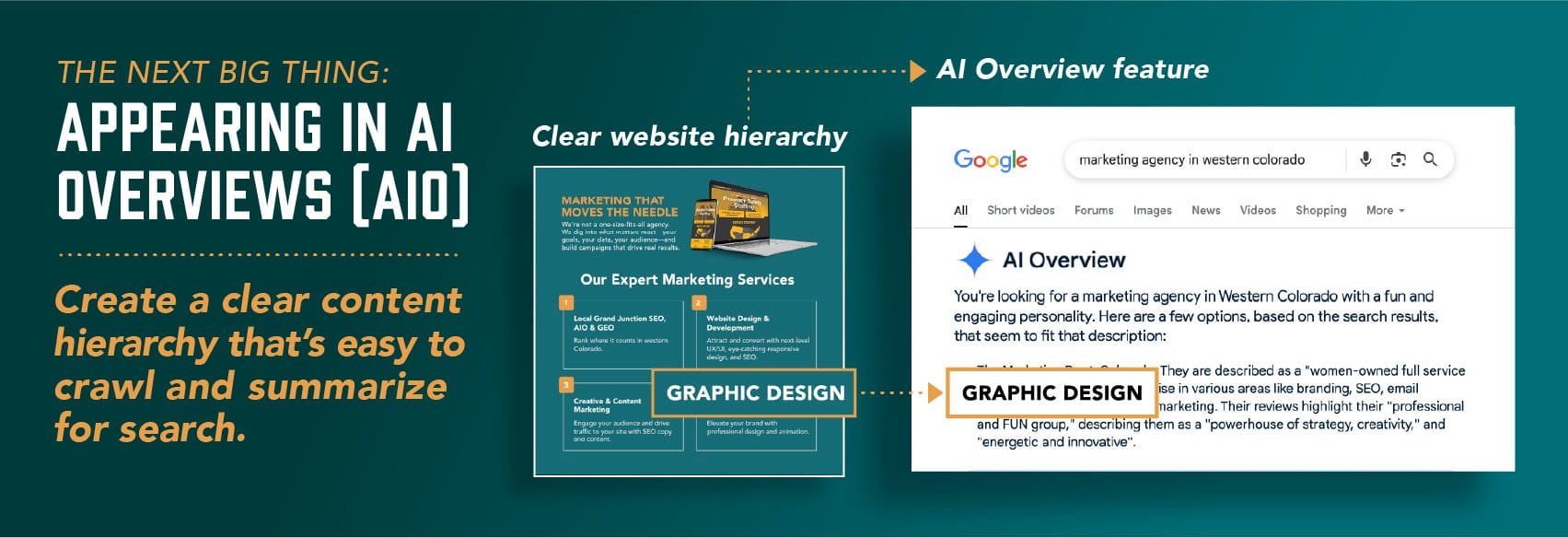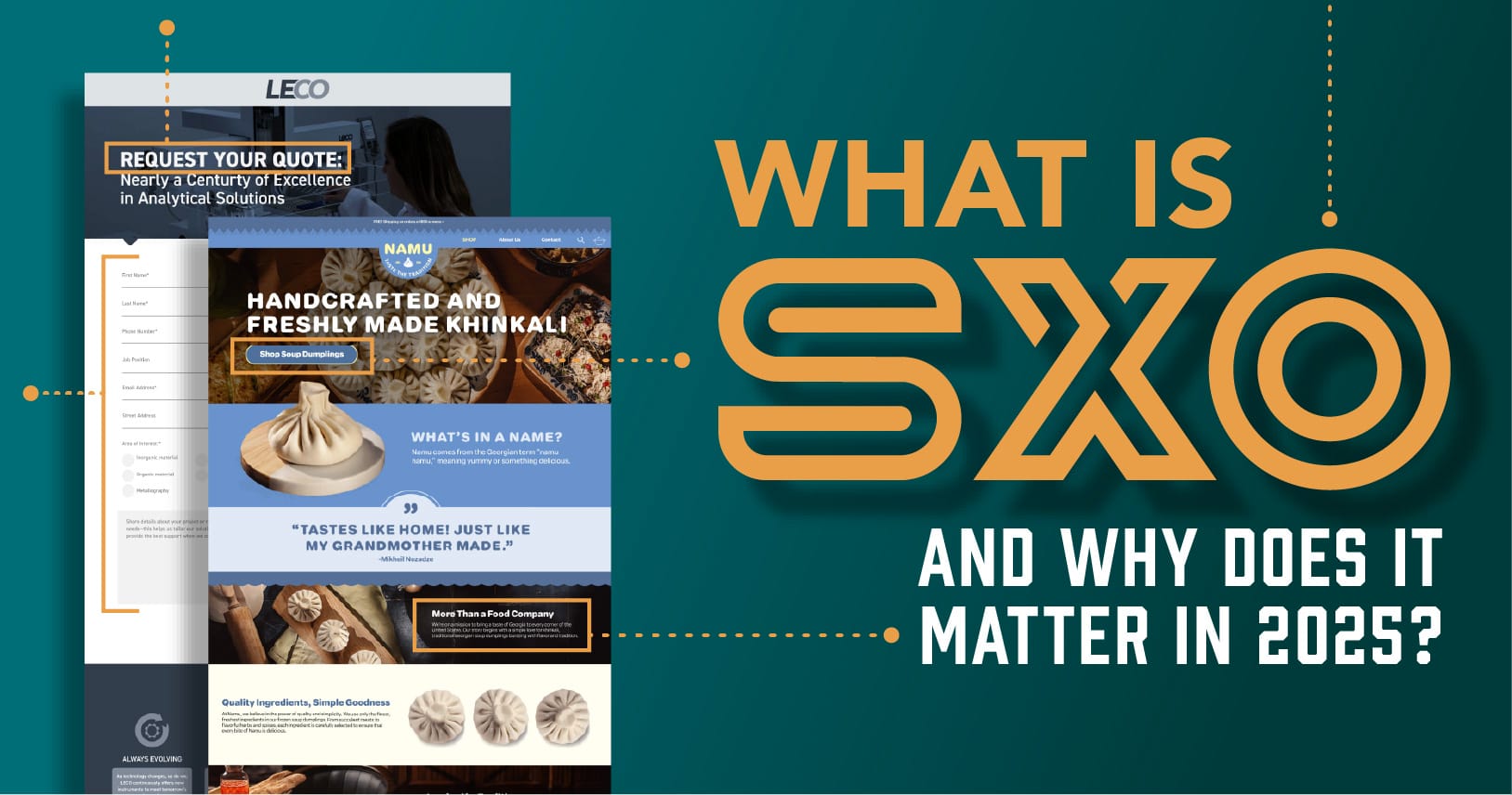If you’re one of our clients, you know that search engine optimization (SEO) can’t exist in a vacuum, because we are blabbing about it all the time. All elements of your brand must work together to give you the visibility—and traffic—you need. SXO stands for search experience optimization, marrying the concepts of SEO and user experience (UX). As AI overviews begin to flood the search landscape, a well-rounded approach to search visibility is more important than ever.
Key Takeaways:
SXO combines the key tenets of SEO and UX. With SXO, a website is not only searchable, but designed in a way that encourages engagement, conversion and consumer loyalty. Key factors that impact SXO include high-quality content, on-page hierarchy, well-organized navigation, site speed, and responsive design.
Table of Contents
What is SXO?
SXO Centers the User
How UX/SEO Work Together
How Omnichannel Marketing Supports SXO
SXO Beyond On-Page
AI and SXO
At The Marketing Dept., we have always approached SEO from an omnichannel perspective—SEO isn’t just about optimizing keywords; it’s about creating the most helpful content for your users and nurturing loyalty, the kind that keeps people around for life. Our tailored SEO strategies encompass a holistic approach that considers all key marketing factors, including on-page, off-page, and technical SEO, as well as UX/UI, graphic design, social media, brand identity, and more.
What is SXO?
SXO takes SEO to the next level—a place where all your marketing efforts are working together to engage customers and potential customers by ensuring your SEO and UX efforts work together to create greater impact. SXO considers how visitors arrive at your site and sets them up for success in finding what they need. SXO also considers optimizing for AI overviews by leveraging tactics that bring your content to the forefront in this new search resource.
In short, SEO helps potential customers find your site and UX encourages them to stick around and engage. A cohesive combination of the two enhances the overall user experience with your brand for the customer. When done right, SXO increases engagement and conversion.
SXO Centers The User
SXO takes the key tenet of SEO—creating content that is helpful to users—and builds on it. By integrating components of UX into SEO efforts, SXO ensures that potential customers receive useful information, have a pleasant experience on your site, and convert in the way that you want them to.

How UX/SEO Work Together
User experience is the practice of making sure your customers can not only navigate their way around your website but that they also enjoy the experience. Components where UX and SEO work together include visually interesting and engaging design, optimized title and header tags, a mobile-friendly website, and a well-structured navigation bar—search engine crawlers and humans need to be able to scan your site and understand what is relevant and useful for the user.
Learn more about how to rank on Google with The Marketing Dept.’s Chief Strategy & Growth Officer, Rachael DeRossi.
Key factors for SXO:
Structured navigation
High-quality content
Engaging design
Site performance

How Omnichannel Marketing Supports SXO
Increasingly, more than just website URLs are appearing in search results—we see social media posts, especially LinkedIn newsletters and posts and Facebook posts, pop up all the time. While these search results aren’t driving direct traffic to your website, they are supporting brand awareness. The presence of newsletters and social posts in search results amplifies how important it is to have a cohesive brand and message across all channels—your tone might be slightly different for each platform, but your customer should understand who they are dealing with each time they experience your brand, no matter where they are seeing you.

TMD Tip: SXO is not just a throw-away task. To be effective, it requires strategic preparation and implementation. Expect to invest both time and financial resources in making your site searchable, visually interesting, and convertible.
SXO Beyond On-Page
There are a number of technical SEO factors that impact SXO, including site speed, mobile optimization, and crawlability. At The Marketing Dept., we address technical SEO issues from the get-go because these factors impact both how your content ranks and the user experience. If someone finds your site and has to wait for it to load, chances are you’re going to lose them, or at the very least credibility.
AI and SXO
AI overviews (AIO) are the next thing in search, and they’re still evolving. What we do know is that to appear in AI overviews, it’s helpful for content to have an organized on-page hierarchy that makes it easy to crawl and identify key points to be included in a summary that enhances the user’s search.

Final Thoughts: Although the search landscape is constantly evolving, two core concepts remain the same: content and experience must be (1) created to help the user and (2) cohesive across all customer touchpoints.









